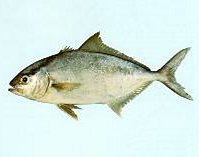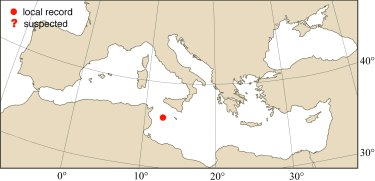
|
Relevant synonyms
Misidentification
Meristic formula
|
|
| © CSIRO Marine & Atmospheric Research photo: Keith Sainsbury acknowledgements to FishBase |
|
SHORT
DESCRIPTION
color :
adults with silvery violet to olive or blueish-green back which gradually changes to silvery on the ventral surface. Often with yellow elongated areas on the sides. Young (up to 20 cm Total Length) have a dark bar from the eye to dorsal fin origin and 6-7 bars on the body.
size :
50-80 cm (max. 120 cm). |
DISTINGUISHING CHARACTERISTICS
BIOLOGY / ECOLOGY
habitat :
pelagic, probably more oceanic than its congenerics. Juveniles found offshore under floating objects. |
|
1st
MEDITERRANEAN RECORD
|

|
|
DISTRIBUTION
|
ESTABLISHMENT SUCCESS
speculated reasons for success :
|
|
|
MODE OF
INTRODUCTION |
IMPORTANCE TO
HUMANS |
|
KEY
REFERENCES
|